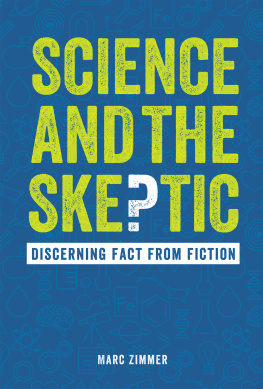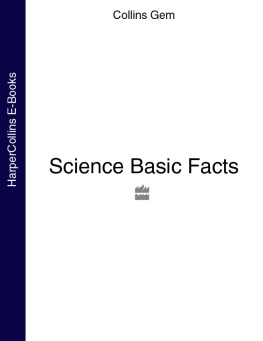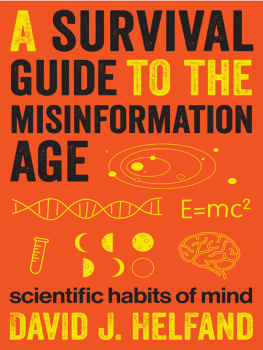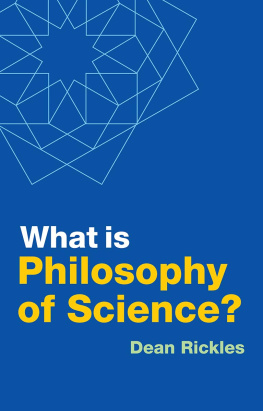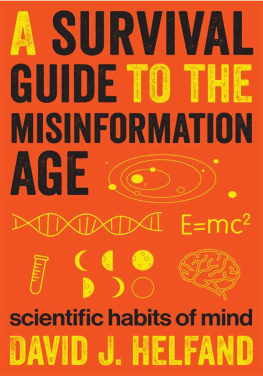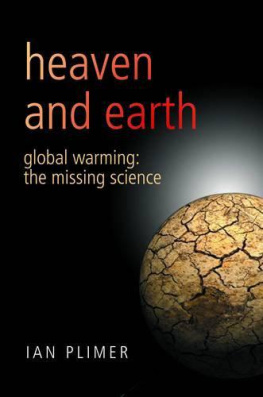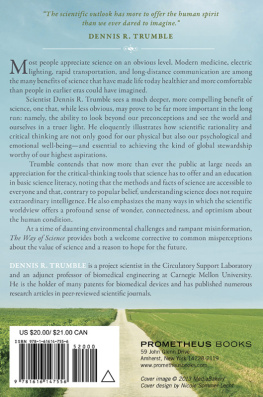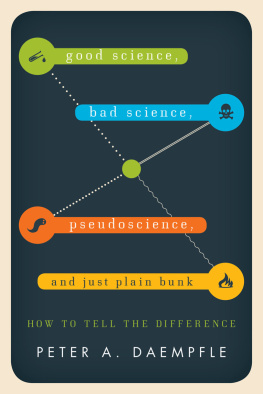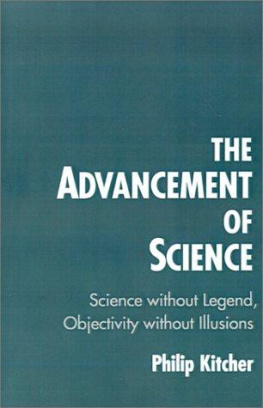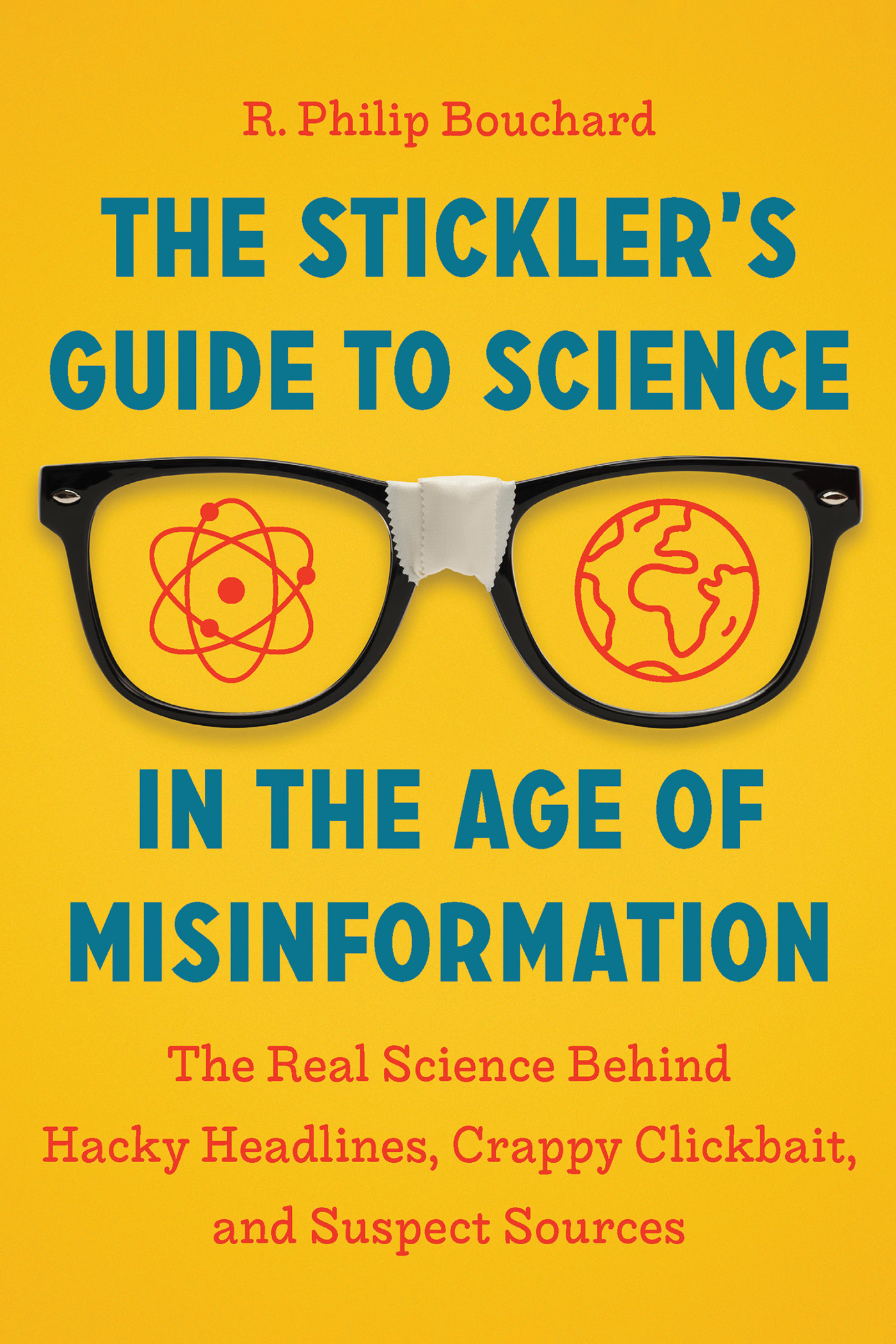Contents
Guide
Page List
THE STICKLERS GUIDE TO SCIENCE IN THE AGE OF MISINFORMATION
The Real Science Behind Hacky Headlines, Crappy Clickbait, and Suspect Sources
R. PHILIP BOUCHARD
Timber Press | Portland, Oregon

CONTENTS
PREFACE
Heres a quick quiz.
Which of the following statements are true?
DNA is the blueprint of life.
Rainforests are the lungs of the planet.
There is no gravity in space.
If you see this as a trick question, youre right. Although the third statement (which reflects a popular misconception about gravity) is objectively false, the first two statements are more difficult to evaluate. Both rely on metaphors instead of presenting objective facts, so theyre not easily categorized as either true or false. Yet both statements are frequently presented as valuable truths, encapsulating important knowledge about science. To evaluate either metaphor, we first have to interpret itto restate it in terms of objective assertions. This is exceedingly tricky, because we can easily draw wildly different conclusions from either metaphor.
The problem here is not just that metaphors are indirect. The broader issue is our tendency to rely on short, familiar phrases to represent large chunks of knowledge. Consider the following examples:
the five senses
survival of the fittest
killing germs
high levels of radiation
twenty-four hours a day
full of energy
a left-brained person
global warming
Each of these phrases is intended to be easily understood, encapsulating a great deal of information we think we already know. In essence, each of these phrases is a kind of meme. In our mass media and social networks, we depend on these verbal shortcuts to make our communication more efficient. Because the phrases are so familiar, we tend to feel confident in our understanding of what these phrases mean. Yet each of these phrases provides cover for common scientific misconceptions. More often than not, our understanding of the science behind these phrases is an awkward blend of truth and untruth. Its not that our popular beliefs about science are all wrong; its that they are often not quite right.
That leads to the first goal of this book: to look at the real science behind popular phrases such as these. In other words, what is it we think we know that isnt quite what we think?
The second goal is to connect the dots. We live in the Information Age, constantly bombarded by disconnected bits of information that are promoted with great urgency by countless media sources and social contacts. When all that information remains disconnected, its merely a collection of trivia without a larger meaning. Its like standing 2 inches from a pointillist painting and staring at the individual dots. I admit that looking at the individual dotsthose bits of triviacan sometimes be fascinating. But the real value comes when you can finally see the big picture, which is not until you step back to see the entire canvas at once. To me, all of those little factoids lack significance until I can see how they fit together.
In my experience, most people are truly interested in connecting the dotsassembling a coherent picture from selected bits of information. But unfortunately, not all of the factoids we encounter are truly factual. The result can be like a huge jumble of puzzle pieces, half of which are decoys that dont actually fit into the big picture. If you have trouble choosing and assembling the correct puzzle pieces, the big picture might never come into view. Or worse yet, a completely erroneous big picture might emerge. In the thirteen chapters of this book, I sort through a prodigious pile of puzzle pieces and select the useful ones that can actually contribute to an accurate, connected picture.
My third and final goal with this book is simply to have a bit of fun. Science information can be presented in a way thats dull and boring, or it can be presented in a way thats lively and interesting. I certainly want to present my collection of dots and puzzle pieces in a manner that you will find highly engagingto give you a book thats truly enjoyable to read. In short, this book is intended to be a fun exercise in connecting the dots that lurk behind the common shorthand phrases we use when we talk about science. WaitI dont think Ive quite captured it. Perhaps I should just say that you and I are about to work together on a big jigsaw puzzle, and I hope to be a lively raconteur as we play.
But before we get started, I must offer a warning. Although I am a stickler for science details, eager to get each of my facts exactly right, you should not assume Ive actually gotten everything perfectly correct. Part of the issue is that science is actually a process, not a collection of facts. This process constantly generates new information, resulting in the continuous questioning of old assumptions. Our knowledge of science undergoes a never-ending process of refinement and reinterpretation of the details. This constant change allows us to see the big picture with ever more clarity, and once in a while it even causes a noteworthy shift in the appearance of the big picture. So theres no way Im ever going to be 100 percent correct. Plus, Ive tried to cover a wide range of topics, and my understanding of any one of those topics is likely to have a few gaps, even though experts in several of these fields have reviewed my chapters and provided me with valuable feedback.
So my ambitious goal has been to create a book thats at least 98 percent correct. The other 2 percent of the information I present might include facts that are misleading, oversimplified, out of date, slightly misstated, or downright erroneous. Realistically, 98 percent is not too bad. One of my favorite quotes describes the astronomer and science writer Carl Sagan (who died in 1996) as someone who was very often right and always interesting. If I can meet a similar standard, to be usually right and almost always interesting, I will have done well. To put it another way, I have high hopes that you will find this book enlightening as well as engaging.
1

The Lungs of the Planet
Ever since I was a child, my friends have noticed a slightly obsessive-compulsive nature to my personality. Just slightly, mind you. For example, I cannot stand to be in the same room as a desk drawer or kitchen drawer that has not been fully closed; I must close it immediately. Simply retreating into the next room will not solve the problem, because Ill still remember that theres an unclosed drawer in the adjoining room. And if I run across a set of data I havent seen before, I often feel compelled to type that data into a spreadsheet so that I can sort and analyze the data in various ways. Hardly a week goes by in which I havent created some fascinating new spreadsheet, such as the one that lists all of the species of trees found in a park near my home, along with the botanical family for each species and the typical height of a mature tree. If you ever happen to visit me, Ill be happy to show you my latest spreadsheet.
Another consequence of this personality trait is that whenever I read about science on the internet or in popular publications, I often find myself saying, Wait! Thats not right! Anyone in the same room with me will soon get an earful about the erroneous material Ive just encountered. Quite often, the offending passage is not


